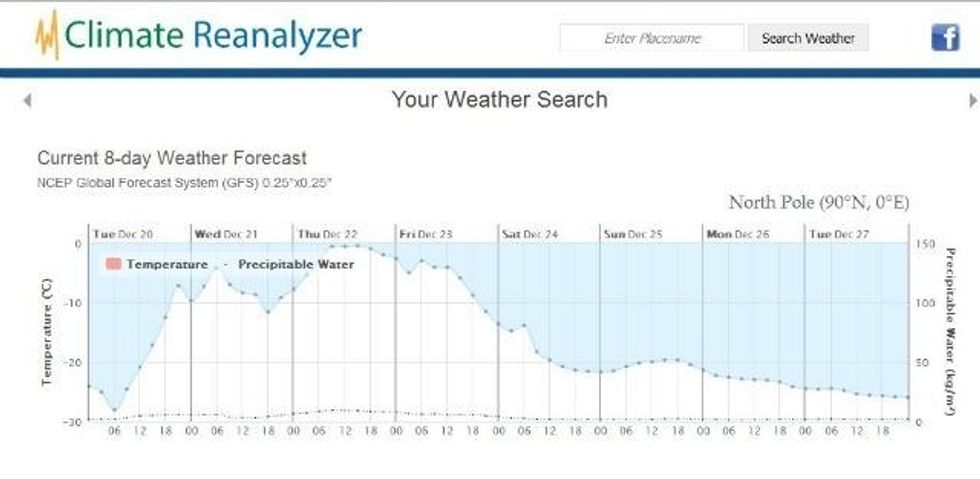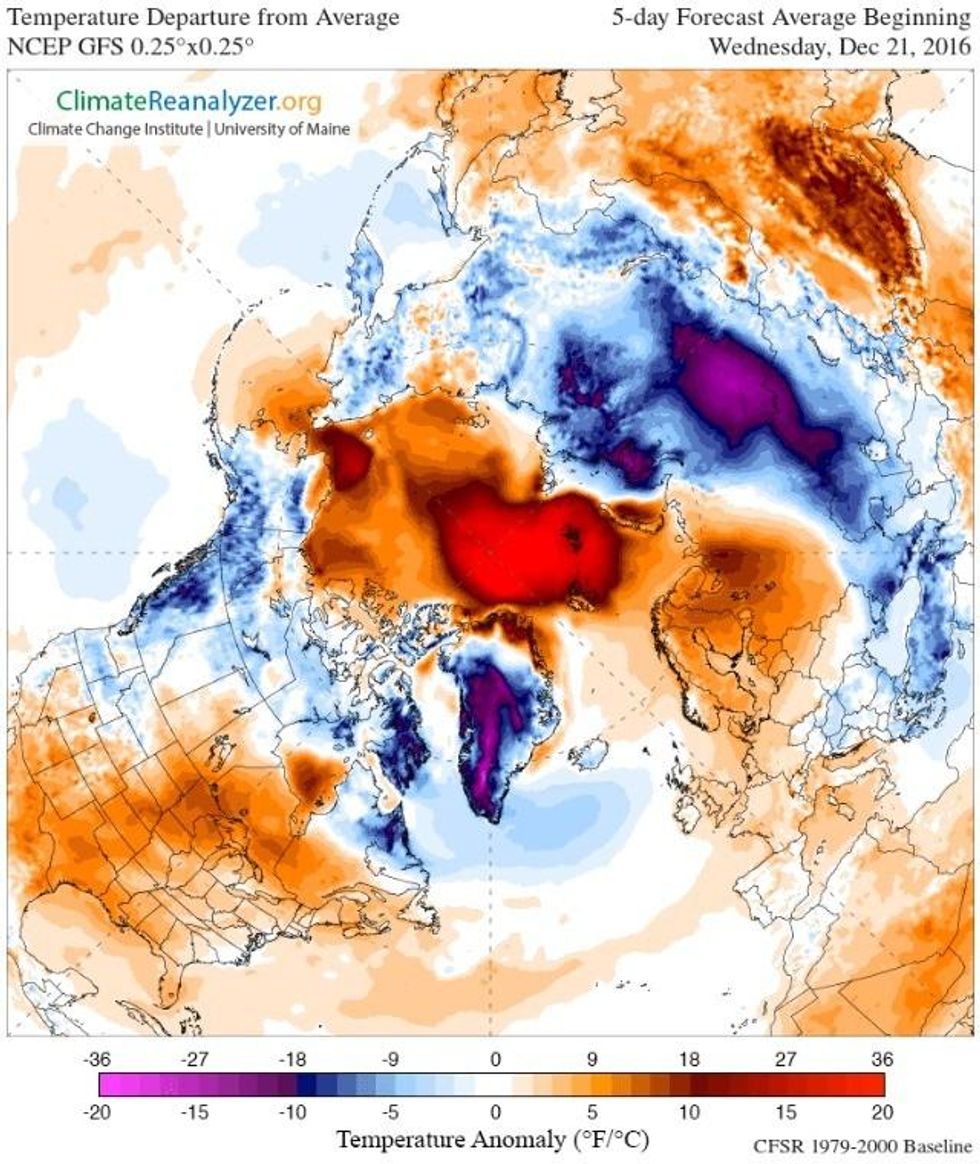Santa will likely be feeling toasty as he does his final checks on the naughty-or-nice list because temperatures at the North Pole on Thursday are forecast to be as much as 50degF above normal.
Temperatures are expected to climb to near the freezing point of 32degF, computer models show.
Zachary Labe, a doctoral student researching the
Arctic at the University of California-Irvine,
wrote on Twitter that the "persistence and magnitude of above average Arctic temperatures continues to remain quite impressive."
The Washington Post also notes: "For the second year in a row in late December and for the second time in as many months, temperatures in the high Arctic will be freakishly high compared to normal."
Meteorologist Jeff Berardelli explains that the current "warming is being caused by a strong storm near Greenland pumping warm air north ahead of the storm center." Mashable's science editor, Andrew Freedman, adds: "Record low levels of sea ice in the Arctic are also contributing to the record high temperatures, along with a weakened polar vortex that has pulled the most frigid air out of the Arctic and redistributed it into North America and Eurasia."
Indeed, last month Arctic sea ice extent hit a record low and the ice experienced a "nearly unprecedented" retreat that "coincided with a period of remarkable warmth across the region, with air temperatures 30degF-35degF above normal," the National Oceanic and Atmospheric Administration (NOAA) said.
In its latest Arctic Report Card, NOAA said last week that the average air temperatures for the region were "unprecedented" and that "Arctic temperatures continue to increase at double the rate of the global temperature increase."
"Rarely have we seen the Arctic show a clearer, stronger, or more pronounced signal of persistent warming and its cascading effects on the environment than this year," added Jeremy Mathis, director of NOAA's Arctic Research Program.
Meanwhile, Santa's reindeer aren't doing so well either.
A new study finds that reindeer in Svalbard, an archipelago of Norway in the Arctic Ocean, are shrinking as a result of warming temperatures.
Winter snows may now fall as rain, leaving a sheet of ice that blocks the plants the reindeer would normally be able to access by brushing off snow. That means the reindeer may starve or give birth to stunted carves, who in turn may produce stunted calves.




